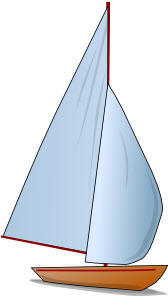Big Communication Satellites Crash 500 Miles Above Siberia
Wednesday, February 11, 2009
www.foxnews.com
CAPE CANAVERAL, Fla. — Two big communications satellites collided in the first-ever crash of two intact spacecraft in orbit, shooting out a pair of massive debris clouds and posing a slight risk to the international space station.
NASA said it will take weeks to determine the full magnitude of the crash, which occurred nearly 500 miles over Siberia on Tuesday.
"We knew this was going to happen eventually," said Mark Matney, an orbital debris scientist at Johnson Space Center in Houston.
NASA believes any risk to the space station and its three astronauts should be low. It orbits about 270 miles below the collision course. There also should be no danger to the space shuttle set to launch with seven astronauts on Feb. 22, officials said, but that will be re-evaluated in the coming days.
The collision involved an Iridium commercial satellite, which was launched in 1997, and a Russian satellite launched in 1993 and believed to be nonfunctioning. The Russian satellite was out of control, Matney said.
The Iridium craft weighed 1,235 pounds, and the Russian craft nearly a ton.
No one has any idea yet how many pieces were generated or how big they might be.
"Right now, they're definitely counting dozens," Matney said. "I would suspect that they'll be counting hundreds when the counting is done."
As for pieces the size of micrometers, the count will likely be in the thousands, he added.
There have been four other cases in which space objects have collided accidentally in orbit, NASA said. But those were considered minor and involved parts of spent rockets or small satellites.
As of Wednesday, there were 9,831 pieces of manmade debris — not counting anything from Tuesday's collision — orbiting Earth. The items, at least 4 inches in size, are being tracked by the U.S. Space Surveillance Network, which is operated by the military. The network detected the two debris clouds created Tuesday.
Litter in orbit has increased in recent years, in part because of the deliberate breakups of old satellites. It's gotten so bad that orbital debris is now the biggest threat to a space shuttle in flight, surpassing the dangers of liftoff and return to Earth. NASA is in regular touch with the Space Surveillance Network, to keep the space station a safe distance from any encroaching objects, and shuttles, too, when they're flying.
"The collisions are going to be becoming more and more important in the coming decades," Matney said.
Iridium Holdings LLC has a system of 65 active satellites which relay calls from portable phones that are about twice the size of a regular mobile phone. It has more than 300,000 subscribers. The U.S. Department of Defense is one of its largest customers.
The company has spare satellites, and it is unclear whether the collision caused an outage. An Iridium spokeswoman had no immediate comment.
Initially launched by Motorola Inc. in the 1990s, Iridium plunged into bankruptcy in 1999. Private investors relaunched service in 2001.
Iridium satellites are unusual because their orbit is so low and they move so fast. Most communications satellites are in much higher orbits and don't move relative to each other, which means collisions are rare.
Iridium Holdings LLC, is owned by New York-based investment firm Greenhill & Co. through a subsidiary, GHL Acquisition Corp., which is listed on the American Stock Exchange. The shares closed Wednesday down 3 cents at $9.28.
Wednesday, February 11, 2009
www.foxnews.com
CAPE CANAVERAL, Fla. — Two big communications satellites collided in the first-ever crash of two intact spacecraft in orbit, shooting out a pair of massive debris clouds and posing a slight risk to the international space station.
NASA said it will take weeks to determine the full magnitude of the crash, which occurred nearly 500 miles over Siberia on Tuesday.
"We knew this was going to happen eventually," said Mark Matney, an orbital debris scientist at Johnson Space Center in Houston.
NASA believes any risk to the space station and its three astronauts should be low. It orbits about 270 miles below the collision course. There also should be no danger to the space shuttle set to launch with seven astronauts on Feb. 22, officials said, but that will be re-evaluated in the coming days.
The collision involved an Iridium commercial satellite, which was launched in 1997, and a Russian satellite launched in 1993 and believed to be nonfunctioning. The Russian satellite was out of control, Matney said.
The Iridium craft weighed 1,235 pounds, and the Russian craft nearly a ton.
No one has any idea yet how many pieces were generated or how big they might be.
"Right now, they're definitely counting dozens," Matney said. "I would suspect that they'll be counting hundreds when the counting is done."
As for pieces the size of micrometers, the count will likely be in the thousands, he added.
There have been four other cases in which space objects have collided accidentally in orbit, NASA said. But those were considered minor and involved parts of spent rockets or small satellites.
As of Wednesday, there were 9,831 pieces of manmade debris — not counting anything from Tuesday's collision — orbiting Earth. The items, at least 4 inches in size, are being tracked by the U.S. Space Surveillance Network, which is operated by the military. The network detected the two debris clouds created Tuesday.
Litter in orbit has increased in recent years, in part because of the deliberate breakups of old satellites. It's gotten so bad that orbital debris is now the biggest threat to a space shuttle in flight, surpassing the dangers of liftoff and return to Earth. NASA is in regular touch with the Space Surveillance Network, to keep the space station a safe distance from any encroaching objects, and shuttles, too, when they're flying.
"The collisions are going to be becoming more and more important in the coming decades," Matney said.
Iridium Holdings LLC has a system of 65 active satellites which relay calls from portable phones that are about twice the size of a regular mobile phone. It has more than 300,000 subscribers. The U.S. Department of Defense is one of its largest customers.
The company has spare satellites, and it is unclear whether the collision caused an outage. An Iridium spokeswoman had no immediate comment.
Initially launched by Motorola Inc. in the 1990s, Iridium plunged into bankruptcy in 1999. Private investors relaunched service in 2001.
Iridium satellites are unusual because their orbit is so low and they move so fast. Most communications satellites are in much higher orbits and don't move relative to each other, which means collisions are rare.
Iridium Holdings LLC, is owned by New York-based investment firm Greenhill & Co. through a subsidiary, GHL Acquisition Corp., which is listed on the American Stock Exchange. The shares closed Wednesday down 3 cents at $9.28.














